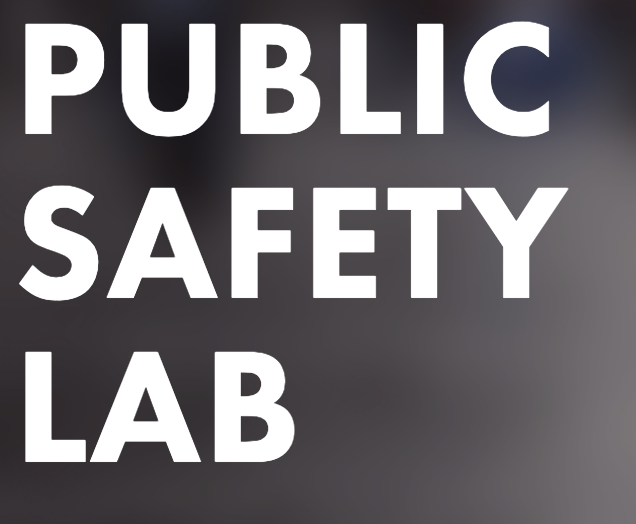CURRENT Projects
Policing for Revenue
In recent years numerous observers have raised concerns about “policing for profit,” or the deployment of law enforcement resources to raise funds for cash-strapped jurisdictions. However, identifying the causal effect of fiscal incentives on law enforcement behavior has remained elusive. This project leverages a discontinuity in the rules allocating fine revenue from traffic citations issued by a large highway patrol agency, finding that the frequency and severity of traffic accidents increase sharply just above the threshold reducing the share of fine revenue captured by the agency. Cited drivers in towns just below this threshold are also given fewer days to pay their fines and are less likely to pay their fines on time, leading to higher risks of late fees and license suspension. These findings suggest that fiscal concerns can in fact impact public safety decisions, and can lead to distortions in public safety outcomes. (ARTICLE HERE)
Discrimination in Criminal Appeals
Using content extracted from the scraped text corpus of the approximately 38,000 slip opinions in criminal appeals heard by New York State's intermediate appellate courts between 2003-2017, appellate judge election and appointment data sourced from the New York State Board of Elections and the New York State Judicial Screening Committee, and defendant demographic and conviction data scraped from the New York State Department of Corrections' inmate database, we report the first within-judge estimates of the effects of both reelection and reappointment incentives on judicial votes on criminal appeals. Our findings indicate that impending judicial reappointment induces a 49 - 52\% within-justice decrease in pro-defendant votes in appeals involving Black defendants heard by all-white panels, but has no effects on votes in other cases. We find no additional effects of impending reelection on appellate justice votes in criminal appeals. Our findings suggest the need for greater attention devoted both to potential selection effects, and to heterogeneous effects by defendant and judge race, in studies of judicial retention institutions. (ARTICLE HERE)
Discrimination in Policing
Black Americans are substantially less safe than white Americans, with persistently higher risks of crime victimization. One possible cause of racial disparities in crime victimization may lie in racially disparate law enforcement responses to crime experienced by Black and white victims. We leverage idiosyncratic variation in the litigation of law enforcement agencies for racially discriminatory employment practices to identify changes in the nature of the police response to Black crime victimization. Using data from the National Crime Victimization Survey between 1979 and 2004, and a series of estimators appropriate for difference-in-differences designs with staggered treatment, we find that litigation over racially discriminatory employment practices in law enforcement agencies decreased Black crime victimization by magnitudes ranging between 24 - 27%, but had no discernible impacts on white crime victimization, reducing the pretreatment racial gap in crime victimization by 73 - 82%. Decreases in Black crime victimization appear in the first year after litigation onset, consistent with efforts by litigated departments to address racial disparities in the police response to reported crime. (ARTICLE HERE; PROBABLE CAUSATION PODCAST EPISODE HERE)
Misdemeanor Prosecution
Communities across the United States are reconsidering the public safety benefits of prosecuting nonviolent misdemeanor offenses, yet there is little empirical evidence to inform policy in this area. In this paper we report the first estimates of the causal effects of misdemeanor prosecution on defendants’ subsequent criminal justice involvement. We leverage the as-if random assignment of nonviolent misdemeanor cases to Assistant District Attorneys (ADAs) who decide whether a case should be prosecuted in the Suffolk County District Attorney’s Office in Massachusetts. These ADAs vary in the average leniency of their prosecution decisions. We find that, for the marginal defendant, nonprosecution of a nonviolent misdemeanor offense leads to a 53% reduction in the likelihood of a new criminal complaint and to a 60% reduction in the number of new criminal complaints over the next two years. These local average treatment effects are largest for defendants without prior criminal records, suggesting that averting criminal record acquisition is an important mechanism driving our findings. We also present evidence that a recent policy change in Suffolk County imposing a presumption of nonprosecution for nonviolent misdemeanor offenses had similar beneficial effects, decreasing the likelihood of subsequent criminal justice involvement. (ARTICLE HERE)
Press: Boston Globe, Chicago Sun-Times, Washington Post, WGBH, WBUR, Commonwealth Magazine, Marginal Revolution, Radio Boston, The Codcast (Commonwealth Magazine podcast), NYU Release, NYU News, Law360, TIME, Reasons to be Cheerful, Probable Causation, New York Times, Atlantic
Prosecutorial Reform and Local Crime Rates
Many communities across the United States have elected reform-minded, progressive prosecutors who seek to reduce the reach and burden of the criminal justice system. Such prosecutors have implemented reforms such as scaling back the prosecution of nonviolent misdemeanors, diverting defendants to treatment programs instead of punishment, and recommending against cash bail for defendants who might otherwise be detained pretrial. Such policies are controversial, and many worry that they could increase crime by reducing deterrent and incapacitation effects. In this paper we use variation in the timing of when these prosecutors took office, across 35 jurisdictions, to measure the effect of their policies on reported crime rates. While our estimates are imprecisely estimated, we find no significant effects of these reforms on local crime rates.
Press: The Economist
Voting From Jail
We leverage new data on daily individual-level jail records and exploit the timing of incarceration to estimate the causal effects of jail incarceration on voting from jail in 2020. We find that registered voters booked into county jails during 2020 voting days for the full duration of voting days were on average 46% less likely to vote in 2020, relative to registered voters booked into the same jails within 7 -- 42 days after Election Day. The estimated negative effect of incarceration on voting from jail was on average 46% larger for Black registered voters, relative to white registered voters. Black registered voters booked into county jails during 2020 voting days for the full duration of voting days were on average 78% less likely to vote in 2020, relative to Black registered voters booked into the same jails just after Election Day. Placebo tests indicate no effects of 2020 jail incarceration on 2012 or 2016 turnout. Our findings reveal a pressing need to enable voting-eligible incarcerated individuals to exercise their constitutional right to vote.

